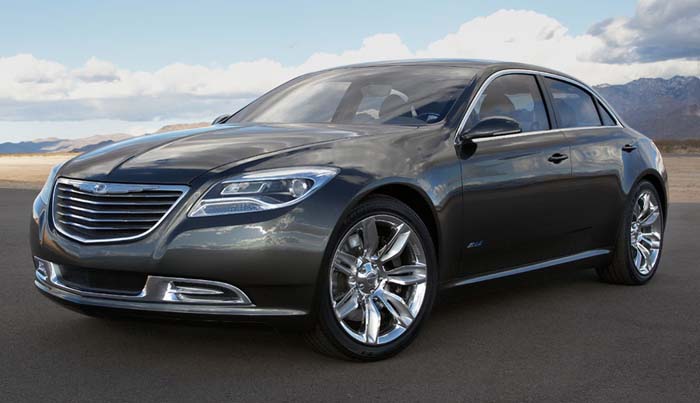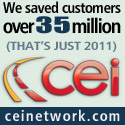
| Monday, January 23, 2012 | Archives | Advertise | Online Buyer's Guide | FLEETSolutions |
Americans Expected To Buy More Cars In 2012
 Strong sales in December capped off a great year for U.S. carmakers - especially Chrysler - and 2012 should be even better. For their biggest Japanese rivals, a year of natural disasters and other struggles ended on a sour note, with U.S. sales falling and the outlook for next year just as challenging. Strong sales in December capped off a great year for U.S. carmakers - especially Chrysler - and 2012 should be even better. For their biggest Japanese rivals, a year of natural disasters and other struggles ended on a sour note, with U.S. sales falling and the outlook for next year just as challenging.Chrysler Group, in the midst of a comeback after its 2009 trip through bankruptcy court, said on January 4 that sales surged thirty-seven percent in December and 26 percent for all of 2011. Demand was particularly strong for the Jeep Grand Cherokee and the Chrysler 200. Chrysler catapulted itself ahead of Honda Motor Co. as the fourth-largest automaker by sales in the U.S. General Motors Co. and Ford Motor Co. ended the year with more modest double-digit percentage gains. Analysts say U.S. car sales rose for the second year in a row as buyers' confidence in the economy picked up, their aging vehicles wore down, and their ability to take out cheap loans improved. U.S. auto sales rose ten percent to 12.8 million in 2011. That's up twenty-two percent from 2009, when the U.S. auto industry and the financial system were in peril. November and December were the strongest months of the year for U.S. auto sales, and analysts expect the momentum to continue into 2012. Improving employment numbers, low interest rates, and building demand to replace older cars should all boost 2012 sales. GM's December sales rose five percent, resulting in a thirteen percent bump for the year, while Ford's December sales climbed ten percent, closing out an eleven percent gain for 2011. Nissan Motor Co., which recovered more quickly than its rivals from the March earthquake and tsunami in Japan, was the only major Japanese automaker to sell more cars in the U.S. in 2011. Its sales surged nearly eight percent in December and fifteen percent for the year. Nissan's Leaf electric car also outsold GM's Chevrolet Volt in the cars' first full year on the market. Nissan sold 9,674 Leafs, beating the Volt by just over 2,000. But for Honda and Toyota, 2011 was a disappointing sales year. They couldn't get enough cars and trucks to U.S. dealers because of Japan's disasters and flooding in Thailand. Toyota said that it doesn't expect its inventory to be at normal levels until March. Both carmakers, whose sales fell seven percent in 2011, were also hurt by aging offerings like the Toyota Corolla and poor reviews of the new Honda Civic. While U.S. sales haven't returned to their pre-recession levels, American motorists are increasingly eager to buy, says Jesse Toprak, Vice President of Analysis for the car pricing site TrueCar.com. Buyers snapped up more small cars like the Chevrolet Cruze, Hyundai Elantra, and Ford Fiesta. And sales of trucks and SUVs picked up as well, a sign that small businesses are updating their aging fleets, something they were reluctant to do during a slow economic recovery. "They're becoming more comfortable buying a car even though the dust hasn't totally settled," says Toprak. GM and others predict that total U.S. auto sales will rise by another one million or so in 2012 to a range of 13.5 million to fourteen million. That's still far below the peak of around seventeen million in 2005, but consistent with a slow and steady economic recovery. Unemployment has declined in the past three months, and hiring is improving. That's helping consumers feel more confident about a big purchase like a car. Low interest rates - below three percent, in some cases - are also enticing buyers, says Don Johnson, GM's U.S. Sales Chief. And with the average age of a car in the U.S. pushing a record eleven years, there is growing demand to replace old cars. Buyers are coming out even though car prices are relatively high. The average new vehicle cost $30,686 in December, up five percent from a year earlier, as automakers offered more pricy features like navigation systems and backup cameras but cut back on rebates and other deals. Incentive spending dropped three percent in December from a year earlier to an average of $2,562 per vehicle, according to TrueCar.com. Many analysts had predicted a price war in 2011 as Toyota and Honda factories resumed normal production and they sought to win customers. But the big discounts never materialized, and GM's Johnson doesn't expect them in 2012, either. But others think Toyota and Honda will use incentives to try to win back the market share they lost in 2011. Toyota expected to end the year with market share of 12.9 percent, down from fifteen percent in 2010. "I still expect Toyota and Honda to be a little more aggressive in the first half," says Paul Ballew, a former GM chief economist who now works for Nationwide Insurance. |
 |
NAFA Fleet Management Association 125 Village Blvd., Suite 200 Princeton, NJ 08540 Telephone: 609.720.0882 Fax: 609.452.8004 |







